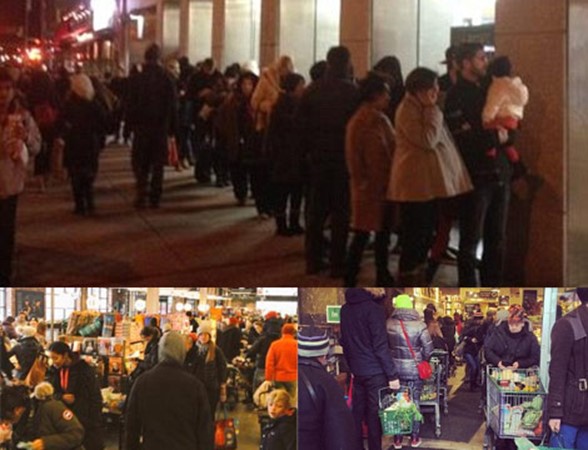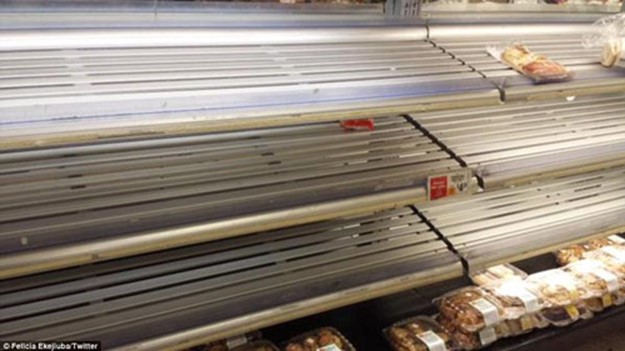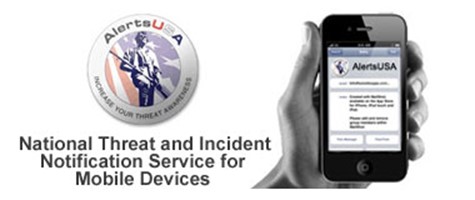In a recent meeting of a Christian-based preparedness group, the following bylaws were distributed for consideration to the adult members of the group. I hope there are some take home items here that will help other individuals or groups when they are in the midst of considering this most difficult decision:
If things get bad, there may be a day when you have to leave your home and evacuate to a safer location. These circumstances might include:
- Regional, large-scale, natural disasters, such as an earthquake, tornado, flood, or fire,
- Civil unrest caused by grid down or large-scale economic collapse,
- Nuclear or hazmat disaster,
- Pandemic outbreak in earliest stages, or
- Governmental crackdown or Martial law.
Having an evacuation plan prepared and in place that includes rally points, rendezvous, signaling codes, times, dates, alternative locations, and ways of communication, without giving up valuable or critical information, is imperative.
Proposed Bylaws/Requirements for Members:
- Secrecy is imperative; no person will be allowed to reside/evacuate with the group who is not a member of the group.
- Members should be preregistered and committed to the group, and acceptance of the bylaws by signature should be required.
- Personal concerns will be addressed by committee vote/hearing.
- The following of the Ten Commandments is mandatory.
- The group should follow the moral compass of the Bible.
- An ongoing relationship with the Lord will be encouraged.
- We will not negotiate with terrorist or marauders for lives of members of the group.
- No members of the group will be left behind without retrieval being attempted.
- Benevolence will be established and group admittance after the fact will be determined.
- Dedication, to the Lord, and the group will be expected.
- Participation is mandatory in the form of work details.
- Duty rosters will be established.
- Advanced training will be encouraged.
- Capitalism will be encouraged.
EACH PERSON OVER 18:
- Is encouraged but not required to have a handgun and 300 rounds of ammo of that caliber, 9 mm or larger.
- Men over 18 are encouraged but not required to also have a rifle and 500 rounds of ammo of that caliber, including five mags of the same caliber if pertinent. (AR-15 Variant is recommended but not required.)
- The alternatively to having a rifle is for men over 18 to have a shotgun, 20 gauge or larger, pump action or double barrel, with 250 rounds of various size shot, 50 rounds of buck shot required in round count, 20 deer slugs required in round count.
- Must have at least $100.00 in cash.
- Should have pre-1965 silver with a $25.00 face value, U.S.-minted coinage or equivalent.
- Must have a CB, walkie-talkie, or hand held radio.
EACH PERSON OVER 16:
- Must have some form of state/federal identification.
- Perform twenty hours per week community service while at evacuation location.
- Have hand tools, with a minimum of four tools per person
- Must possess a survival knife with blade over 4″ long and a sharpening stone
EACH PERSON OVER THE AGE OF 12:
- Is required to participate in four hours a week of training. Training will include hunting/marksmanship, bush craft, personal defense, gardening, food preservation, first aid, nutrition, plant identification, and more.
- Is required to have a personal first-aid kit/trauma kit (Hardship cases will be evaluated if requested on a person-by-person basis.)
FOR EACH PERSON IN THE FAMILY, FAMILY MEMBER(S) MUST CONTRIBUTE:
- A total of forty hours of prior community service to the group’s evacuation location preparation.
- $100 (or $200 for entire family) of construction materials on-site or in place at evacuation location.
FOR EACH PERSON IN THE FAMILY, THE FAMILY SHOULD HAVE STORED THE FOLLOWING:
- 200 lbs. of canned/dried goods per person.
- 100 lbs. of rice or beans or oatmeal per person.
- Two flashlights plus batteries.
- Five long-life candles.
- One kerosene or Coleman fuel lantern and mantles,
- One alternative cooking source.
- One alternative heating source with spare fuel.
- Twenty-five lbs. of toiletries.
- Twenty-five lbs. of first aid items.
- For each viable female, a case of famine hygiene products.
- Babies still on breastmilk or formula must have a six month supply of formula.
- Five lbs. of salt.
- Ten lbs. of sugar.
EACH FAMILY IS REQUIRED TO HAVE:
- Five conibear-style traps/live traps per family
- A hatchet, buck saw, ax, splitting maul, and/or chain saw and fuel
The items above are mandatory. What are the other things recommended to previously obtained and have in place or ready to take with me? When it is time to evacuate, there will be more for you gather, such as.
- Gardening tools (large and small), seeds, fertilizer, buckets, watering cans, et cetera,
- Clothing for at least seven days, including weather dependent four pair of shoes (minimum two pair for hiking),
- Cash, precious metals, barter items,
- Protection in the forms of weapons and ammunition, force multipliers, battle gear,
- Construction tools in carrier or tool box,
- Construction materials,
- Long-term food stores, all you can carry (plus all you have previously stored on location),
- Personal effects, documents, identification, driver’s license, passport, and birth certificate,
- Means of communication– two-way and public monitoring radio, scanners, and cell phone,
- Alternative lighting and heating options, fire starters, and related items,
- Alternative cooking devices and spare fuel,
- Food preservation aids, such as vacuum sealers, canners, pressure canners, Mylar bags, oxygen absorbers, and so forth,
- Food mills and grinders,
- First aid supplies, prescription and non-prescription medications, creams, ointments, bug spray, sun screen, lotion, alcohol, hydrogen peroxide, Vaseline, and other related items,
- Toiletries: soap, shampoo, hand lotion, grooming items, tooth brush, paste, floss, razor, et cetera,
- Feminine hygiene items and contraceptives,
- Bedding, towels, pillows,
- A Bible, games, books, playing cards, and other means of entertainment,
- Batteries, chargers, and adapters,
- Battery-powered hand tools for construction,
- Generators, converters, spare batteries, and other power sources,
- Cooking utensils, pots, pans, Dutch ovens (the larger, the better for community meals),
- Preparedness library, downloads from Internet printed out, phone apps on survival, Boy Scout manuals, and how-to books on wilderness survival,
- Camping gear– sleeping bags, tents, tarps, portable shelter, portable stoves, et cetera,
- Cots, air mattresses/pads, rollup mattresses, hammocks, and rope,
- Fishing gear and hunting gear, plus meat processing equipment,
- Spices
- Coffee, hot drink or cold drink mixes, tea, et cetera,
- Water treatment supplies/storage containers,
- Alternative ways of hunting, such as cross bows, bows, slingshots, snares, and/or blowguns,
- Ammo reloading supplies and equipment,
Having a location in advance to evacuate to may allow for large portions of these items to be stored up in advance.
CB Radio communications and Rally Points
CB users should monitor Channel 17 each evening at 6:00 PM, if there is notification of an impending or active crisis, for evacuation status.
The status levels are as follows:
- Green level means all is well; there is no perceived need to monitor radio/cell phone at this time,
- Yellow level means things are heating up and in flux; updates of times and radio frequencies to monitor will be issued, and
- Red Level means the times are showing stress and difficulty, and evacuation is imminent. Instructions for evacuation locations, times, rally points, and additional instructions will be issued in coded form to members of the group. Departure times will be determined after rally points are reached and a census is taken of members present.
Codes for evacuation locations:
- Rally point 1: location A
- Rally Point 2: location B
- Rally Point 3: location C
- Rally Point 4: Head to bug out location
If a Rally Point is deemed unsafe to use, the first person arriving will paint, mark, or tape a large “C” (meaning that the location is compromised) or place a red bandana on the entrance to the location to warn others to move to an alternative rally point, which is given in the original instructions via the radio.
Codes for radio communications instructing telling when and where to meet:
- Times will be based on xxxx
- Days will be based on xxxx
- Rally points will be given as numbers listed above.
Start now to make sure you are staying prepared.
Via: survivalblog
 Follow
Follow














